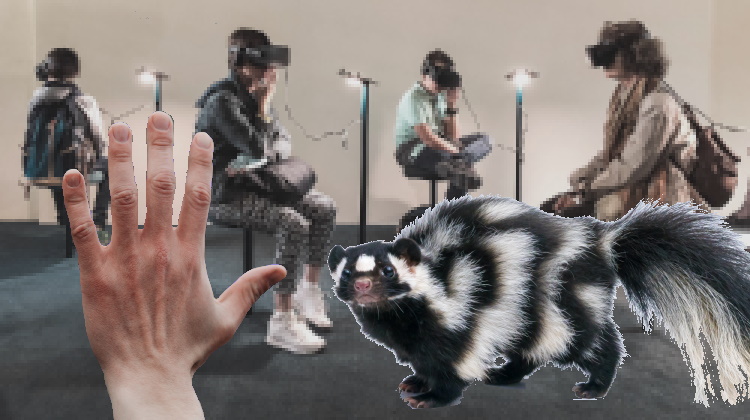
The problem with most virtual reality (VR) today is that it caters only to one or two of our five senses. Unless we use our imaginations, we never actually think we’re somewhere else when we don a virtual reality headset.
The five basic senses are sight, sound, touch, smell, and taste. Current virtual reality technology covers sight and sound. Taste is linked with smell, so may be able to get away with disregarding taste. That leaves us with touch and smell. To complete the VR experience, we need to create technology to simulate touch and smell.
The most elegant solution is to directly stimulate the brain with artificial touch and smell signals. The next best solution is to create objects to touch (physically putting objects in front of the person, spraying water, or creating heat) and smells to experience (physically putting smells near the person’s nose) in real-time around the VR user. The crudest solution is to place an object that creates different touch sensations in the person’s hands, and generating smells by mixing chemicals nearby.
To create a full-sense virtual reality, we must create a system that provides 1) visual feedback, 2) audio feedback, 3) haptic feedback, and 4) olfactory feedback. Since the visual and audio feedback components are already well-developed, we need to focus on haptic and olfactory feedback research.
So far, I’ve only discussed the feedback outputs of a full-sense virtual reality system. Also important are the data inputs. We already have advanced systems for collecting, storing, and classifying audio/visual information. But our systems for collecting, storing, and classifying haptic and olfactory information is almost non-existent. How would you codify a smell or sensation into a computer so that it may be reproduced in the future?
Visual information is stored with mappings of pixels, each pixel represented by a color value. We can store and reproduce 16,777,216 different colors using the RGB color scheme. We need to develop standard schemes like this to store haptic and olfactory data. Once we have standard schemes for collecting and storing haptic and olfactory data, we can collect data to reproduce in virtual reality systems.
Haptic: how do you represent a texture, a temperature, pain, or pleasure in a computer?
Olfactory: does a palette of “primary smells” exist like we have “primary colors?” (In color theory, you can create any color using just red, blue, and yellow… and perhaps black and white).
I find it interesting that so much research is going into creating artificial brains these days, when we can’t even create a satisfactory artificial experience yet. Shouldn’t virtual reality come before artificial intelligence? It’s a similar paradox to how so many people are researching how we can move to Mars, when we can’t even inhabit our own oceans yet.
Leave a Reply